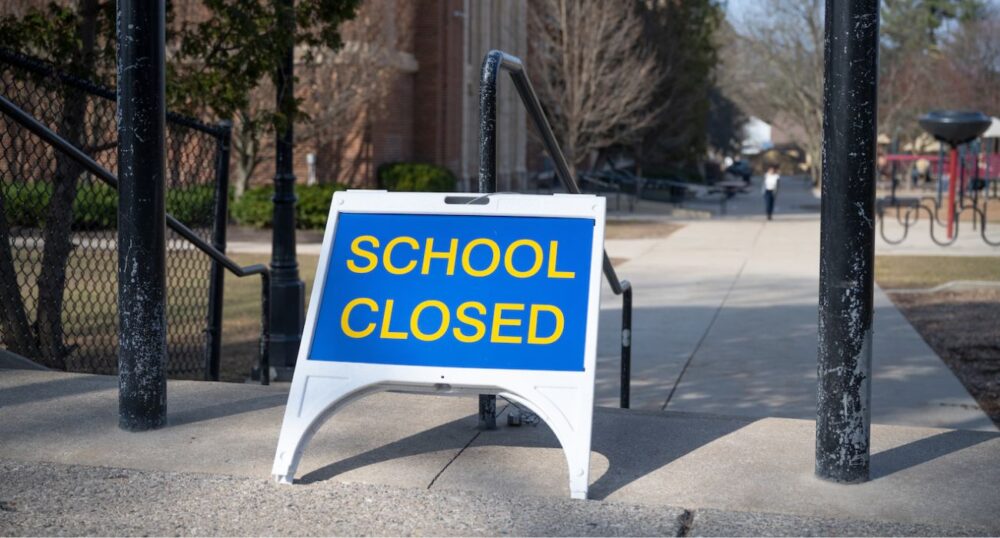Four years ago, the first wave of the COVID-19 lockdowns closed in-person learning across the nation, leaving the lingering question: What learning was lost, and have classrooms rebounded?
A study published in May 2023 by researchers from several universities and colleges, including Harvard University and Dartmouth College, sought to “describe variation in pandemic-related learning losses” and “understand mechanisms that led to learning issues” to determine when we can expect to see a rebound for the losses suffered.
The study analyzed data from roughly 7,800 school districts across 41 states between 2009 and 2022 and found that “scores declined more in high poverty and high minority districts and in districts that spent more time in remote and hybrid instruction during the 2020-21 school year. Undoubtedly, in-person learning is important for student achievement.”
This study found that the average drop in math scores from 2019 to 2022 led to students falling from .35 years behind to .57 years behind. The students who fell behind the most were more involved with online or remote learning. Specifically, the study showed that students with a hybrid schedule did better on average than their fully remote counterparts but worse than their entirely in-person peers.
However, the study noted that where a student learned was not always a predictor of success or failure.
“It is important to note that in the research on pandemic learning losses… and our study, there is substantial variation in learning losses not explained by instructional modality. Notably, there were districts that spent a lot of time in remote learning that had small losses and districts that spent a lot of time in-person that had large losses,” part of the study read.
When looking at the economic impact on student academics, Sean F. Reardon, a Harvard professor of poverty and inequality and one of the authors of the study, told the New York Times that a community’s poverty rate and length of school closure had a “roughly equal” effect on student outcomes. Additionally, the combination of poverty and remote learning was particularly harmful. For each week spent remotely, students in poorer districts experienced steeper losses in math than students in wealthier districts.
An analysis by the Center for Education Policy Research at Harvard University and the Educational Opportunity Project at Stanford University in January examined the academic recovery process following the pandemic’s impact on education. The analysis found that though it has taken some time, student achievement did improve between the spring of 2022 and 2023. Students recovered approximately one-third of the original loss in math and one-quarter of the loss in reading.
However, the overall recovery was not sufficient enough to close the gap between high and low-poverty districts.
“In all but three states (Arkansas, Pennsylvania, and Virginia), poorer districts remain further behind their 2019 levels of achievement than wealthier districts. In most states, achievement gaps between rich and poor districts are even wider now than they were before the pandemic,'” the analysis read.
“Although good news, it also means that even if schools maintain the same pace this year, students, especially in lower-income districts, are unlikely to have returned to 2019 levels of achievement when the federal dollars are gone.”
As previously reported by The Dallas Express, Dallas ISD’s student achievement outcomes have been struggling in recent years, with only 41% of students scoring at grade level on the STAAR exam and only 81.1% of the graduating Class of 2022 earning a diploma on time, according to the Texas Education Agency’s accountability report for the 2021-2022 school year.
Furthermore, 57 Dallas ISD campuses received a D rating in student achievement, while 29 got an F.

